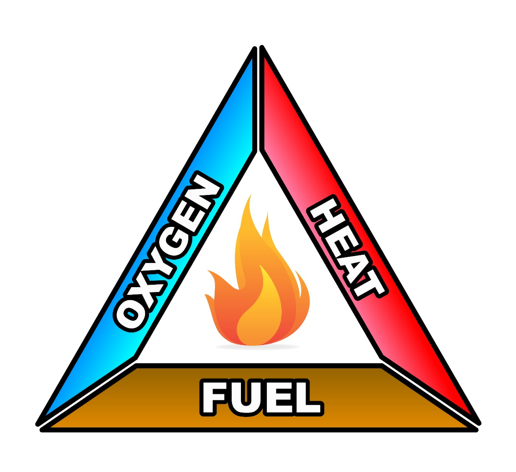The Fire Triangle
All fires need heat, fuel and oxygen and it is often referred to as the Fire Triangle because, simply put, if you remove any part of the triangle a fire will be extinguished!
Heat
All fires require heat energy to ignite. This heat energy in turn produces more heat energy and ensures that the fire keeps burning.
Collapsing the heat component of a fire should be relatively simple, right? Doesn’t water often cool down a fire? Yes, however, whilst water can be an ally, water is not appropriate for all fire scenarios. What would happen if you sprayed water on an electrical fire, for example? The water would help conduct electricity, further spreading the energy causing the fire. Thus, it’s important to know that the type of fire and your available firefighting equipment dictate which area of the fire triangle you should target.
Fuel
There are a whole host of common fuels for fires. For example paper, wood, aerosol cans and cooking oils. Understanding which of these materials (liquid, gas or solid) could potentially start a fire in your home or commercial premises then dictates how you might prepare for and deal with it.
As a result, collapsing a fire via the fuel component can be tricky. Whilst electrical fires are common in offices you might also see flammable liquid fires or gas fires. Your best bet is to gather as much information as possible regarding what could happen in your office and then prepare accordingly. If you can’t remove a risk, reduce it as much as possible.
Oxygen
The final component of the triangle is oxygen. Fortunately for a fire, oxygen is very easily accessible. But wouldn’t oxygen be very difficult to entirely remove?
Well, not always. If the fire is small, a fire blanket can be one of your best weapons. Fire blankets can immediately starve a fire of oxygen, if applied correctly. Similarly, particular extinguishers, such as carbon dioxide (CO2) extinguishers, can create a barrier between the fuel and oxygen in the atmosphere.

